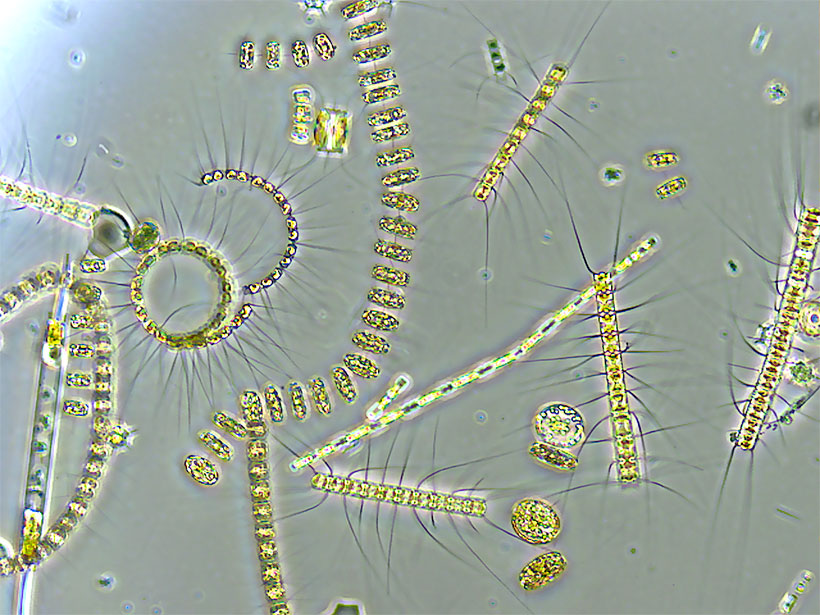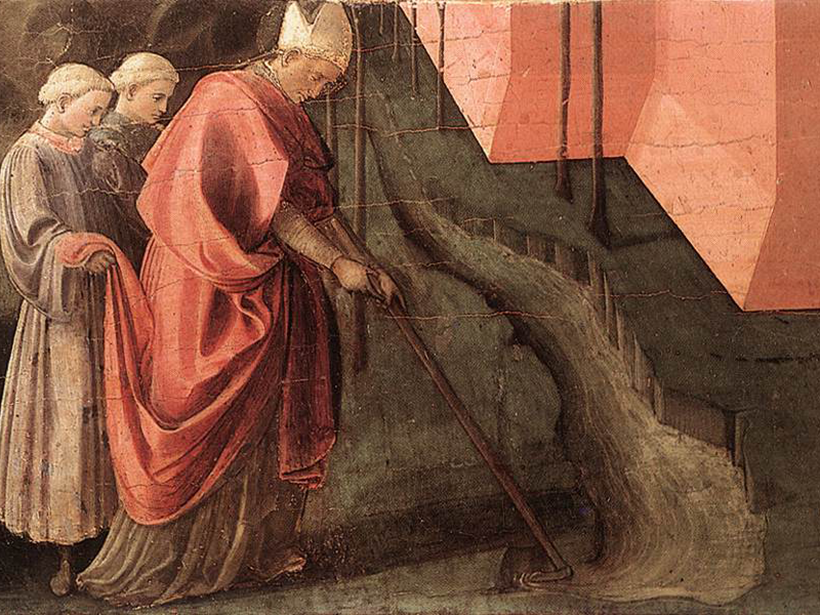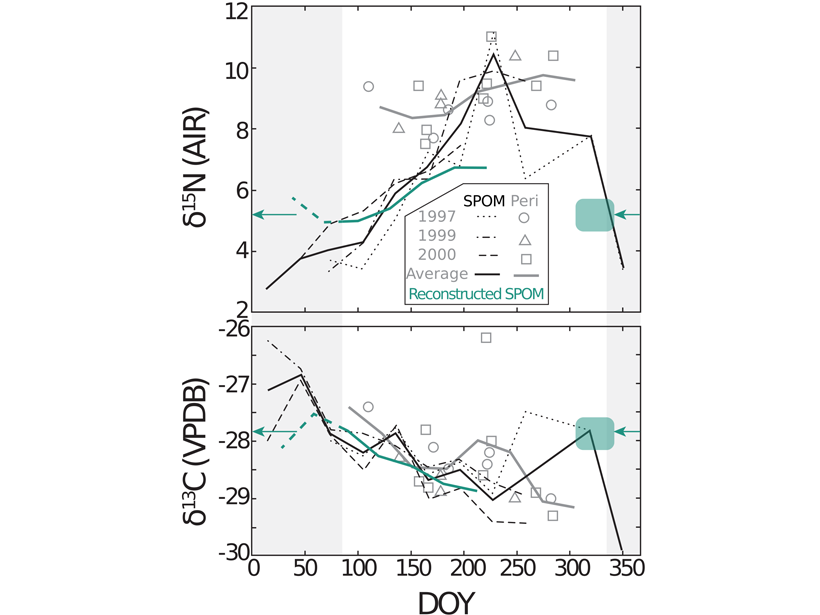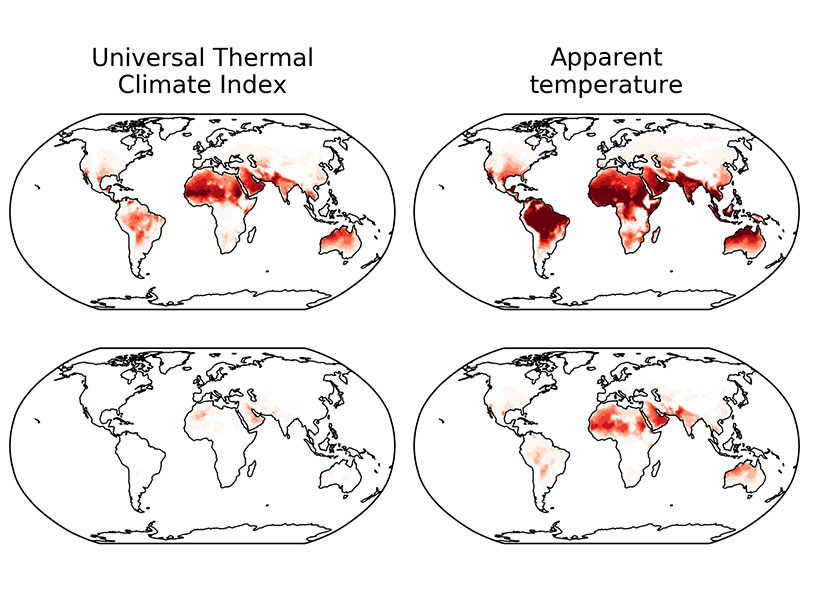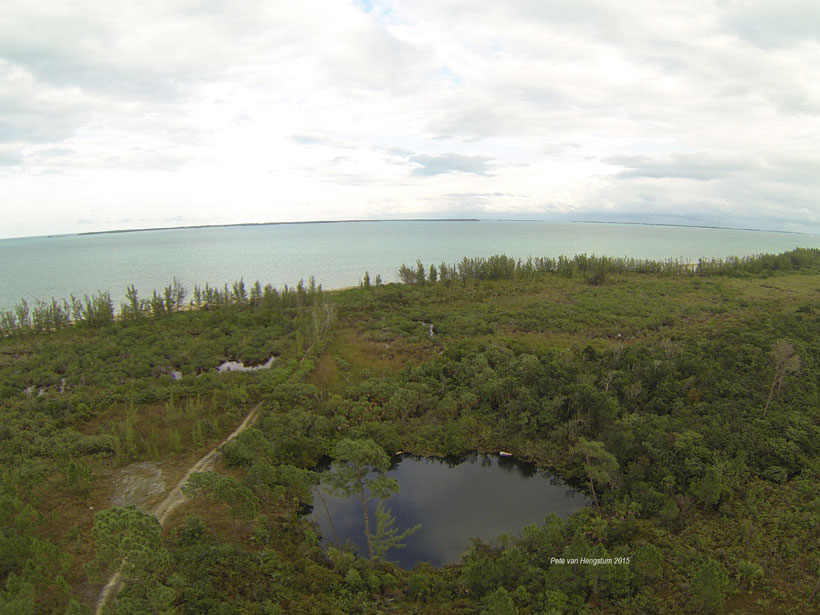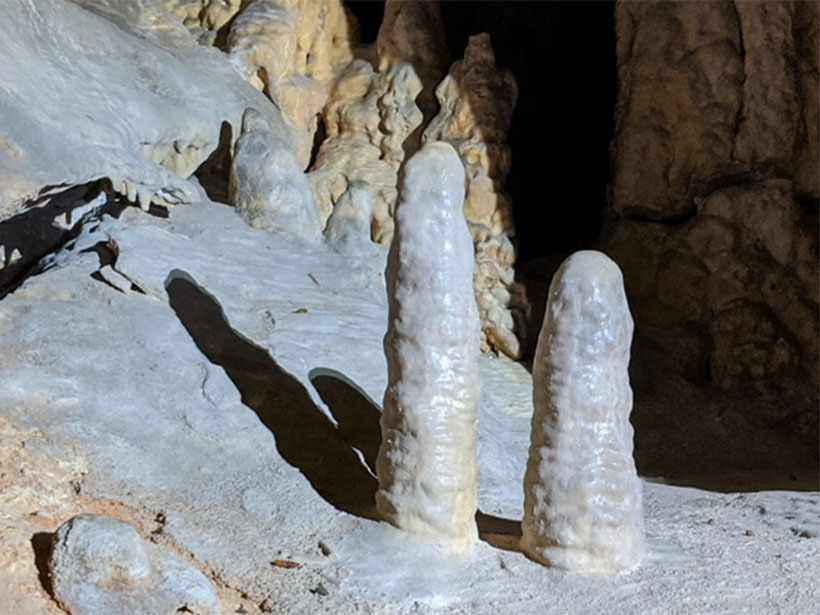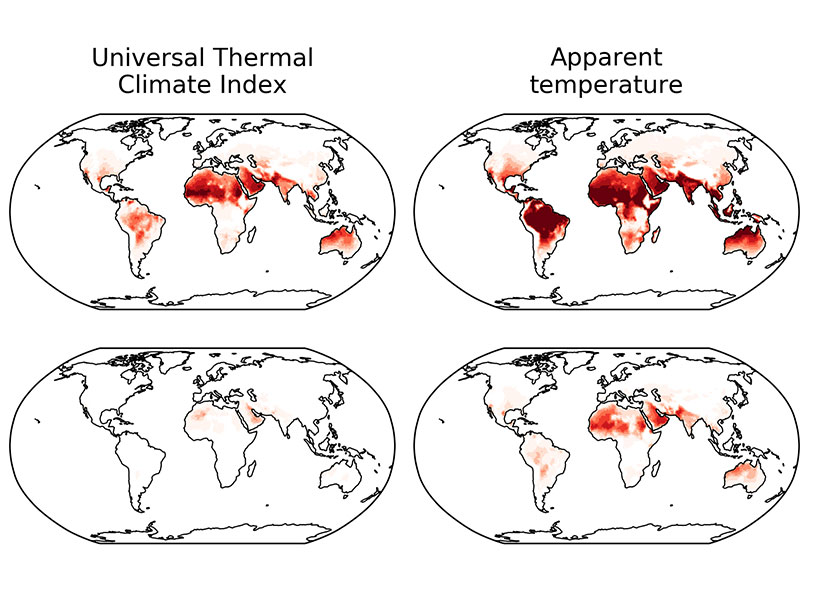New insights into the dynamics of ocean features known as deep chlorophyll maxima set the stage for better understanding of their role in carbon cycling.
proxies
Holy Water: Miracle Accounts and Proxy Data Tell a Climate Story
In 6th century Italy, saints were said to perform an unusual number of water miracles. Paleoclimatological data from a stalagmite may reveal why.
Tracking Excess Nitrogen with Freshwater Mussels
Mussel shell periostracum and carbonate bound organic matter document seasonal variability in the isotopic composition of riverine suspended particulate organic matter.
Early Inhabitants of the Bahamas Radically Altered the Environment
Clues in sediments show that once humans arrived on Great Abaco Island, they hunted large reptiles to extinction and burned the old hardwoods and palms, leading to new pine- and mangrove-dominated lands.
Stalagmite Layers Reveal Hidden Climate Stories
A global investigation discovers where annually laminated stalagmites are found, analyzes their growth properties, and explains how they can be best used in Earth science research.
Global Warming Causes Uneven Changes in Heat Stress Indicators
Different indicators change in different ways, but climate models project a clear trend of increasing heat stress.
Podcast: What Tree Rings Can Tell Us About the U.S. Civil War
Climate change–induced drought may have had an influence on the Civil War.
Geologists Have a New Tool for Reconstructing the Ancient Climate
A new study of seafloor sediments finds that the temperature record in the early Paleozoic corresponds to significant shifts in the diversity of life on Earth.
Dust on the Wind
A new study confirms that an important wind system is shifting due to climate change.

